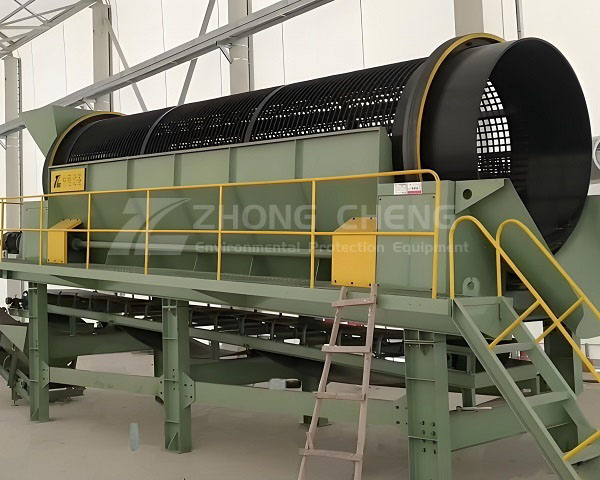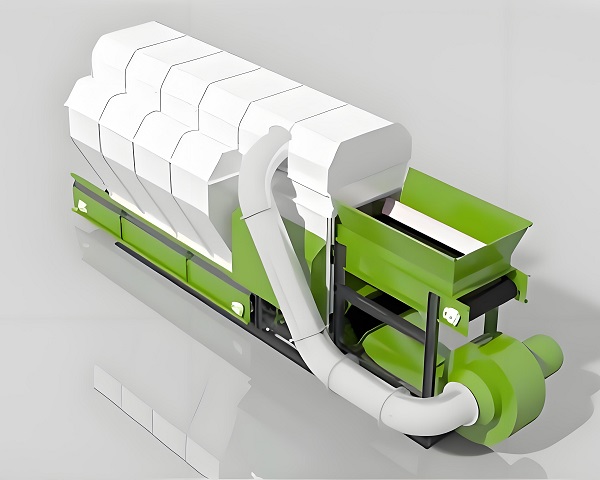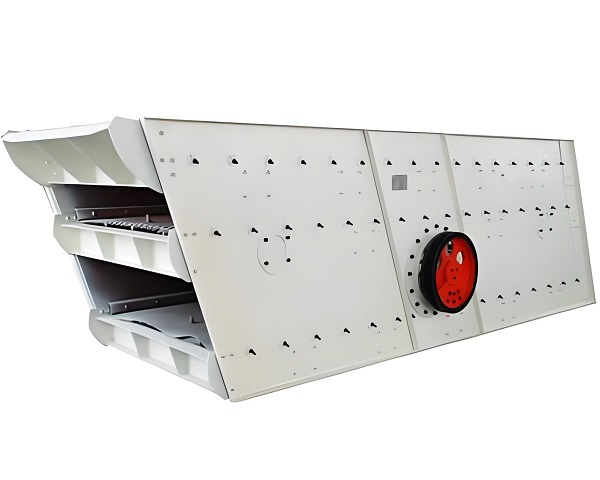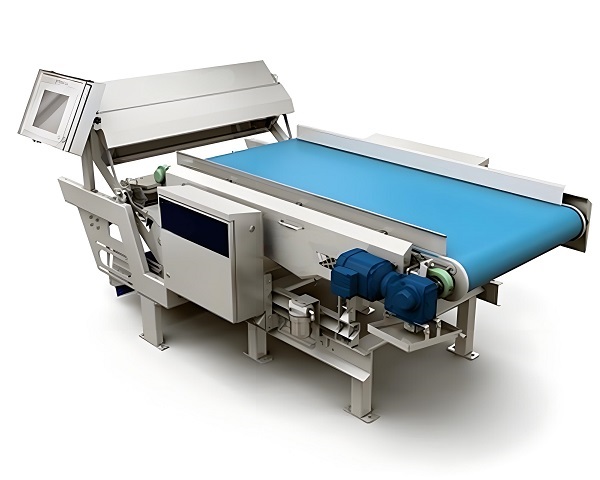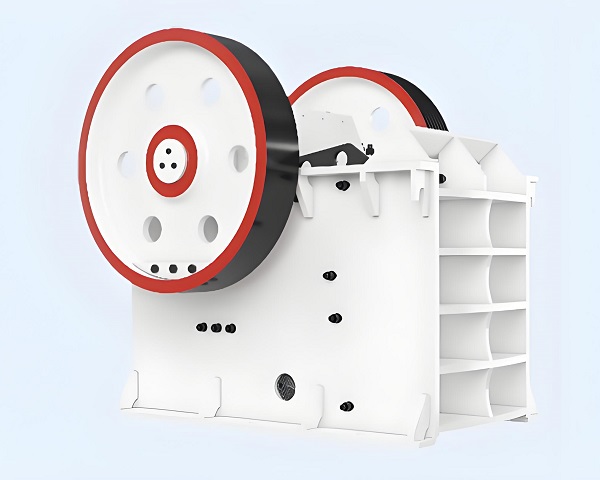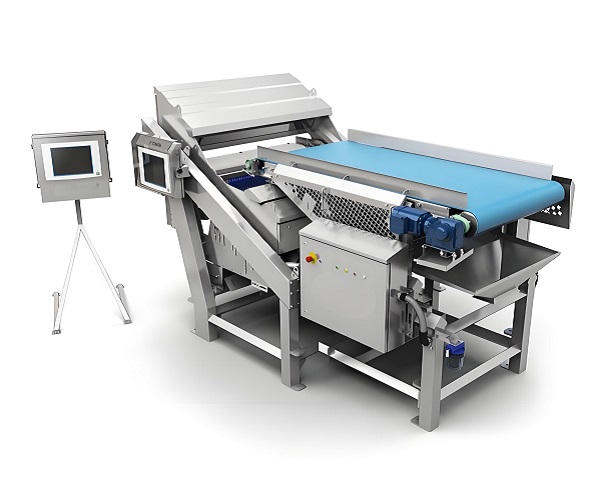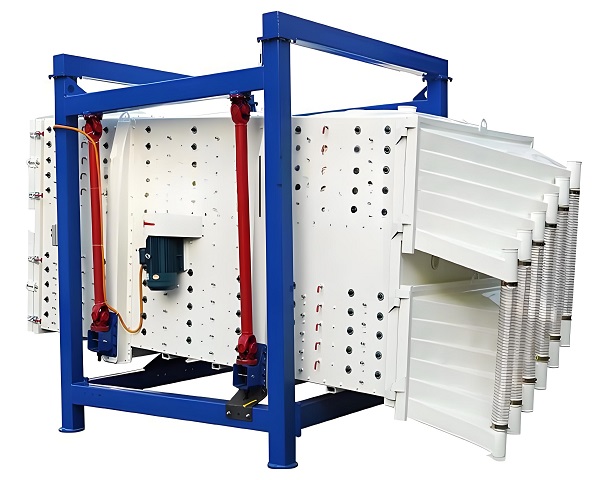Jaw crusher is a common primary crushing equipment. It crushes materials through the relative squeezing and rolling action of the moving jaw and the static jaw ......
Sanitary Waste Sorting System in Malaysia Introduce
Malaysia domestic waste screening and machine classification system is a set of integrated and intelligent solid waste treatment solution, aiming to effectively deal with the waste treatment pressure caused by the rapid development of the city and realize waste recycling, reduction and harmless treatment. With the increase of urban population density and living standard, the waste output is growing day by day, and the traditional landfill or simple incineration mode can not meet the requirements of environmental protection and sustainable development. With advanced mechanical screening and intelligent sorting technology as the core, the system combines back-end organic treatment and energy conversion process to build an efficient and environmentally friendly integrated waste treatment process.
The operation process of the whole system is divided into several key steps: first, through manual and mechanical preliminary bag breaking and rough sorting, the large garbage such as furniture, electrical appliances, etc. are separately removed. Then enter the multi-stage screening link, such as vibrating screen and Trommel Screen, to classify the waste according to the particle size, and separate the fine particles such as organic matter and fine plastic from large plastic bottles, metals and papers. Then, the color and material are identified by the Optical Sort to separate recyclable plastics, paper and other high value wastes; Air Separator separates light plastic from heavy organic matter; The magnetic separator and eddy current separator are responsible for the separation of metals, such as iron, aluminum and copper, to achieve efficient recovery.
Upon sorting, the organic part is sent to the anaerobic fermentation equipment or composting system and converted into biogas or organic fertilizer for power generation or agricultural use; The recyclable materials enter the recycling system for cleaning, granulating or packaging; The non-recyclable inorganic residue can be harmlessly treated through incineration or solidification technology. Part of the heat energy generated by incineration can also be used for cogeneration to further improve the resource utilization rate.
The core advantage of this solution is its highly automated and modular design, which can flexibly configure equipment according to waste output, composition and site conditions, and is applicable to cities and regions of various sizes. At the same time, the system greatly reduces the reliance on manpower and the risk of secondary pollution in the separation process. Through the whole process of resource recovery and energy conversion, the landfill volume can be reduced by more than 70%, and the greenhouse gas emission can also be significantly reduced, greatly improving the environmental quality.
In practice, the system is widely deployed in garbage disposal centers and ecological parks in several cities in Malaysia, and gradually promoted to county transfer stations, scenic spots and industrial parks. Especially in Smart City and Green Community construction, this system, as an important part of environmental protection infrastructure, effectively promotes the integrated development of source reduction, intelligent sorting and green energy utilization.
Malaysia's domestic waste screening and machine classification system is an innovative solution to address the current challenges of urban solid waste, which not only improves the efficiency and environmental protection level of waste treatment, but also provides solid support for achieving the national green and low-carbon development goals.
Advantages and features of Sanitary Waste Sorting System in Malaysia
Sanitary Waste Sorting System in Malaysia features high efficiency, intelligence, and environmental friendliness. It serves as a key technological solution for achieving waste resource recovery and harmless disposal. The main features and advantages of this system are as follows:
1. High Automation and Intelligent Sorting
The system integrates various advanced equipment, such as vibrating screens, trommel screens, air separators, optical sorters, magnetic separators, and eddy current separators. These enable efficient and automatic processes including bag breaking, screening, classification, and material separation, significantly reducing the need for manual labor. The use of AI-based image recognition technology ensures accurate identification and sorting based on color and material, greatly improving sorting accuracy and efficiency.
2. Modular Design with Strong Adaptability
With a modular design, the system is flexible and scalable, allowing customized equipment configurations based on the type and volume of waste in different regions. It can be effectively deployed in both large urban processing centers and smaller municipal transfer stations, ensuring wide applicability and easy expansion.
3. Multi-Level Resource Recovery for Maximum Utilization
The system enables precise separation and efficient recovery of various recyclable materials, such as metals (iron, aluminum), plastics (PET, PE, PP), paper, and glass. This significantly improves resource utilization and allows many recovered materials to be reused in manufacturing or exported, creating economic value.
4. Eco-Friendly Organic Waste Treatment with Energy Reuse
Organic waste is treated through anaerobic digestion or composting, reducing overall waste volume while generating biogas, liquid fertilizer, and compost. The biogas can be used for power generation or as a heat source, supporting a circular economy model.
5. Harmless Disposal and Environmental Protection
Residual non-recyclable waste undergoes incineration, pyrolysis, or solidification, ensuring harmless final disposal. This minimizes pollution to soil, water, and air, while controlling odors, pathogens, and leachate, thereby improving the urban ecological environment.
6. Supports Green Cities and Sustainable Development
By integrating waste sorting, resource recovery, and energy conversion, the system is an essential part of green city construction, smart communities, and eco-industrial parks. It aligns with Malaysia’s national strategy for green development and sustainability.
Sanitary Waste Sorting System in Malaysia excels in efficiency, intelligence, and environmental impact. It significantly improves waste management capabilities while promoting recycling, reducing carbon emissions, and enhancing the quality of urban living.
Main Machine
Customer Feedback
As a user of the Sanitary Waste Sorting System in Malaysia, we have experienced a significant transformation in our waste management operations. Previously, we faced numerous challenges such as mixed waste, low resource recovery, and inefficiencies in manual sorting. Since implementing this system, the automated screening and intelligent sorting processes have greatly improved the accuracy of waste classification while reducing operational costs. The system performs exceptionally well in separating and recovering metals, plastics, and organic materials, resulting in a noticeable increase in recovery rates. Organic waste is treated through anaerobic digestion, generating biogas that serves as a renewable energy source. The system operates smoothly, is easy to maintain, and effectively controls pollution, earning high praise from government regulatory bodies. This solution has not only helped us achieve both environmental and economic benefits but has also advanced our progress toward green and sustainable development. We are highly satisfied with the system’s technology and after-sales support and would gladly recommend this efficient waste management solution to other cities and organizations.


























